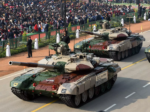Mass Shootings in America: The Unrelenting Tragedy and the Ongoing Debate

Image Source: Visual Capitalist
The United States is grappling with a disturbing and recurring crisis – mass shootings. The recent incident in Maine, where a US Army reservist killed 18 people in a bowling alley and a bar, stands as a grim testament to the frequency and severity of these events. As the nation mourns the victims, the debate over gun control and the Second Amendment is reignited. In this article, we explore the prevalence of mass shootings in the US, the complexities of gun laws, and the ongoing struggle to find a solution.
Mass shootings have become alarmingly common in the United States, a country with more firearms than people. Attempts to address this issue with stricter gun control measures consistently encounter resistance. In 2023 alone, the country has already witnessed at least 565 mass shootings, defined as incidents where four or more people are wounded or killed.
Gun violence has emerged as the leading cause of death for children and young adults in the United States, making it a pressing public health concern. The question arises: why does the US, despite widespread outrage over recurring shootings, find itself unable to curb this menace?
The heart of the gun control debate in the US lies in the Second Amendment of the Constitution, which states, “A well-regulated Militia, being necessary to the security of a free State, the right of the people to keep and bear Arms, shall not be infringed.” This amendment has led to a legal framework where firearms, especially high-powered assault rifles and semi-automatic pistols, are readily available and affordable throughout the nation.
Although there have been periods where federal laws banned certain types of firearms, such as assault weapons, and large-capacity magazines, these restrictions have largely expired. Currently, there are no federal laws prohibiting semi-automatic assault weapons or .50 caliber rifles. This leniency extends to handguns and large-capacity magazines.
Background checks are mandated only for those purchasing firearms from federally authorized dealers, leaving room for private sales without background checks. Moreover, firearm safety training is not a federal requirement for gun purchasers.
Efforts to tighten gun controls in the US routinely meet with opposition from those who staunchly defend the constitutional right to bear arms, primarily within the Republican Party. While a majority of Americans have supported stricter gun laws for decades, the political paralysis and legislative inaction continue.
The debate over gun control has been further fueled by high-profile mass shootings that have shocked the nation in recent years. Despite the clear public support for new restrictions, lawmakers have struggled to pass meaningful gun legislation in the wake of these tragedies.
The sheer number of firearms circulating in the United States is staggering. Over the past two decades, more than 200 million guns have entered the market, with assault rifles and personal handguns leading the way. These weapons have contributed to a surge in murders, mass shootings, and suicides.
In fact, the US, with less than 5 percent of the world’s population, possesses 46 percent of the world’s civilian-owned guns. An average of 88 guns exists for every 100 people in the US. This abundance of firearms correlates with the country having the highest homicide-by-firearm rate among developed nations.
Public opinion in the US regarding gun control remains divided. While a majority of Americans support stricter gun laws, there is a growing call for a ban on firearms. Around 55 percent of the population favors a ban on the manufacture, possession, and sale of semi-automatic guns.
Other proposed measures include raising the legal age for purchasing certain firearms and implementing a 30-day waiting period for gun purchases. It is evident that the American public is increasingly concerned about the impact of gun violence.
The ongoing crisis of mass shootings in the United States is a deeply rooted and multifaceted problem. The Second Amendment, a cornerstone of the country’s Constitution, has shaped a legal framework that allows firearms to be more accessible than ever. Efforts to enact stricter gun control measures have been met with resistance, contributing to the ongoing violence.
As the nation grapples with the devastating aftermath of yet another mass shooting, the debate over gun control persists. The prevalence of firearms and the deeply entrenched cultural attachment to guns in the US make it a complex and challenging issue to address.
The path forward is far from clear, and as the country mourns the lives lost, the call for action becomes increasingly urgent. The United States must confront this issue and find a way to balance its historical attachment to firearms with the need to protect its citizens from the devastating impact of gun violence.
Team Profile

- News Writer
- Harshit Tokas is a Political Science and International Affairs Post-Graduate with a passion for understanding and analyzing complex political landscapes. Skilled in research, data analysis, and policy development. Eager to contribute his knowledge and insights to drive positive change.
Latest entries
 English1 December 2023Ambati Rayudu Backs Ruturaj Gaikwad as a Future Leader of Indian Cricket
English1 December 2023Ambati Rayudu Backs Ruturaj Gaikwad as a Future Leader of Indian Cricket English1 December 2023Changing Tide: Pujara and Rahane Omitted from South Africa Tour Squad
English1 December 2023Changing Tide: Pujara and Rahane Omitted from South Africa Tour Squad Defence1 December 2023India Greenlights Procurement of Advanced Military Assets in Multi-billion Defence Upgrade
Defence1 December 2023India Greenlights Procurement of Advanced Military Assets in Multi-billion Defence Upgrade English1 December 2023Delhi Government Pushes for Completion of Asia’s Largest Wastewater Treatment Plant
English1 December 2023Delhi Government Pushes for Completion of Asia’s Largest Wastewater Treatment Plant









